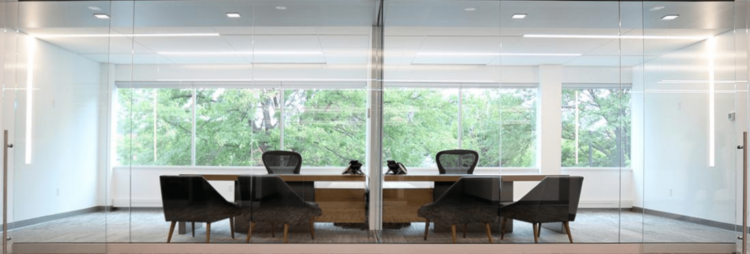
By Marina Kondakova, Ph.D. – Director of Device Formulations, OLEDWorks
The Hazards of Blue Light
The French Agency for Food, Environmental and Occupational Health & Safety’s (ANSES) report on the “effects on human health and the environment (fauna and flora) of systems using light-emitting diodes (LEDs)” recommends limiting exposure to blue-rich white light from LED for many reasons.
A bright blue light hurts everyone who can see it, regardless of their proximity to the source. Small point, high intensity, blue-component-rich light, like LEDs, can be reflected from a surfaces (desk or counter top, for example) and reach the eyes. LED lamps are richer in blue content compared to other artificial light sources, and the photobiological risk is even higher when cool-white light is used. Cool-white lights contain particularly high blue content, have high color temperature (i.e. 6000K or higher), and is often used in retail spaces.
Impact of Blue Light on Vision
The ANSES report shows that exposure to blue light can cause permanent damage to the retina. Light-induced retinal damage can result from viewing either a very bright light for a short time (acute exposure) or a less bright light for a longer duration (development of Age-Related Macular Degeneration – AMD).
- AMD is a leading cause of vision loss in the U.S.
- AMD currently leads to progressive blindness in more than 35% of people over the age of 75.
Disruption of our Biological Clock
The ANSES report shows that people who are exposed to blue-rich light from lighting and screens had a significant suppression in melatonin production. This disruption of the circadian cycle negatively affects our physiology and behavior. The ANSES report suggests that melatonin suppression at night is linked to developing serious illnesses such as diabetes, breast cancer and cardiovascular diseases.
Risks for Children
Blue light is particularly harmful for children’s eyes because it is not filtered as it is in adult’s eyes.
- Children are born with a completely clear lens in the eye, which begins to cloud as you age – not reaching peak visual performance until age 20.
- Because of this clear lens, nearly 100% of the harmful blue light present in most artificial light sources reaches children’s retinas.
Other groups that are particularly susceptible:
- Infants, toddlers, and teenagers
- Seniors
- Pregnant women
- Night workers
- People with ocular diseases
- People with artificial lenses
LEDs Cause Migraines, Eye Fatigue, and More
LEDs are high power point sources producing intense tight beams of light. Due to its small size and high brightness, LEDs produce more glare than light emitted by other technologies.
As a high-power light source, LEDs are highly reactive to current fluctuations, which translates to the human eye as flickering. This flickering causes migraines, headaches, eye fatigue, and risk of accidents. Some flicker frequencies you can’t even see, but your receptors sense them, resulting in the same negative effects.
Recognized effects of flickering:
- Neurological problems, including epileptic seizure
- Headaches, nausea fatigue, blurred vision, eyestrain
- Apparent slowing or stopping of motion
- Reduced visual task performance
- Distraction
- Autistic vision problem
OLED Light: Healthy Light for Our Well-being
OLED light contains the “good blue”: longer wavelengths of blue which are safer for our eyes than the high blue peaks found in LED lighting. It delivers the same amount of light as LED, in superior quality, with significantly less hazardous blue light. Validated through the IEC standard for physiological risk of blue and infrared light – our OLEDs have no risk for skin and eyes and are rated as exempt for all photobiological risks. One of the advantages of OLED lighting is that it’s a naturally diffuse light source, which means it emits light from the entire surface area, rather than from one or multiple points. This presents a soft brightness and glare-free experience for humans making it a safer, more comfortable solution than LED. Studies have shown that OLED lighting, in comparison to LED standards, resulted in lower eye fatigue.



![[eBook] How OLED is Healthy Light for Our Well-Being](https://www.oledworks.com/wp-content/uploads/2020/08/top-banner-image-blog-page-healthy-ebook-750x254.jpg)